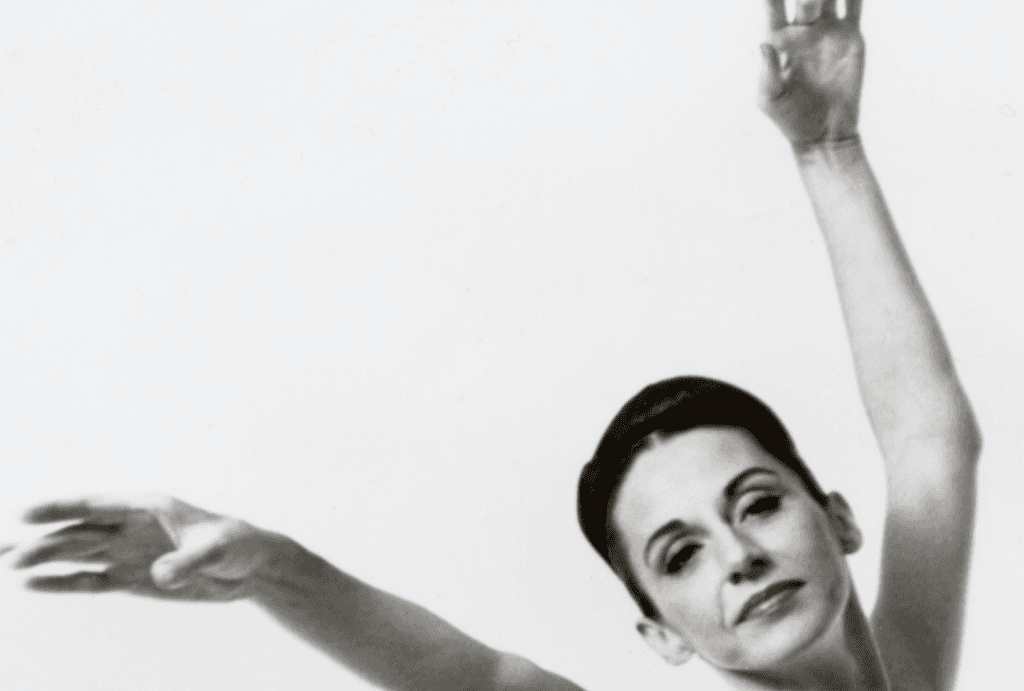
POSTED June 27, 2023
Surprising Things You May Not Know About Alvin Ailey’s Memoria
Nearly all of Alvin Ailey’s works are based on a relationship, a feeling, or an event he experienced, and Memoria is one of his most personal. The death of his dear friend and colleague, Joyce Trisler, spurred him to create the ballet, which captures the journey of a woman—a teacher—on her way through life.
Here are five amazing things to know about Alvin Ailey's powerful and mesmerizing piece and the woman who inspired it.
Memoria honors the life and legacy of choreographer Joyce Trisler.

Memoria was created after the death of Mr. Ailey’s dear friend and gifted dancer, Joyce Trisler. The two met and became friends while dancing in Lestor Horton’s company in California. They both ended up in New York and Ms. Trisler eventually became a leading member of Alvin Ailey American Dance Theater and a teacher at The Ailey School.
Mr. Ailey felt the loss of his friend very deeply and while he couldn’t bring himself to attend her memorial service he worked through his pain and grief by choreographing a ballet that he dedicated to “the joy...the beauty…the creativity…and the wild spirit of [his] friend.” He created this personal tribute on Donna Wood and set it to a hauntingly beautiful score by Keith Jarrett, further enhancing the emotional depth of the piece. After the 1979 premiere at New York City Center, The New York Times dance critic Anna Kisselgoff wrote, “Mr. Ailey has paid Miss Trisler the fine tribute of creating a work that has a universal quality. It is a dance of both exultation and quiet but deep feeling.”
It is a dance of both exultation and quiet but deep feeling.
Who was Joyce Trisler?
She joined the Lester Horton Dance Theater when she was just 15, where she met and became close friends with Alvin Ailey. She matched Mr. Ailey’s sense of humor and he appreciated that she didn’t let New York City change her. She was a passionate dancer and a choreographer, with Mr. Ailey acquiring her ballet Journey for the Company repertory. In Alvin Ailey: A Life in Dance, Jennifer Dunning writes: “A dancer of extraordinary suppleness and resiliency, Trisler had created the solo [in Journey] for her ‘floppy’ self, as Alvin loved to describe her, for a back that carved into a deep curve and legs that stretched out on a line that seemed to reach into infinity.”
The ballet explores the journey one can have from sorrow to joy.
The ballet opens with “In Memory”, in which a solo woman is often isolated even while surrounded by couples and two male attendants to show that she’s no longer a part of the world others inhabit. The second section, “In Celebration”, transcends the sorrow and moves into an emotional celebration as the female dancer—now dressed in crimson—is welcomed and surrounded by dancers who lift her up to the sky in the end. “Both the dance and the music build from a mood of somber yearning to frisky syncopation and finally to a surging, wild melodic joy.” (Alvin Ailey: A Life in Dance by Jennifer Dunning)
Mr. Ailey drew inspiration from Trisler's spirit and passion for dance. Into the choreography, he made a point to weave in the Horton technique they both knew and loved and incorporated phrases from Trisler’s Journey, a classic at the time.
Both the dance and the music build from a mood of somber yearning to frisky syncopation and finally to a surging, wild melodic joy.
Ailey dancers from across the organization perform in Memoria.
One of the most wonderful things about Memoria is that from the very beginning Mr. Ailey created it to include members of Ailey II (originally the Ailey Repertory Company) and students from The Ailey School, many of whom had recently studied dance with Trisler and felt the sadness of losing her. Even today, whenever the piece is performed, Ailey II dancers join rehearsals and special auditions are held for students from the school so that they can perform alongside Alvin Ailey American Dance Theater.

Dancers outside of Ailey are sometimes invited to perform Memoria with the Company.
Over the years, Memoria has captivated audiences with its timeless message that reminds us of our shared humanity. The piece is now performed across the globe and often features talented local dancers from the city where the work is performed. In 2014, the Company brought Memoria to Kansas City, Missouri, and invited 29 dance students from the University of Missouri Kansas City dance Conservatory to take part in the performance and in 2023 local dancers from Edinburgh, Scotland will perform in the piece.
Want to learn more about Memoria and other Ailey classics? Visit our repertory page.
Our ability to fund Alvin Ailey American Dance Theater is due to generosity from patrons like you. Support Alvin Ailey American Dance Theater by making a gift today. How to Give
Want more stories like this in your inbox? Sign up for Ailey News and be the first to know when a new post hits the Ailey Blog.